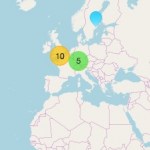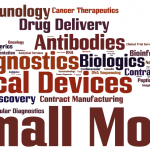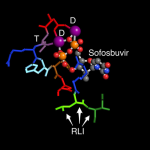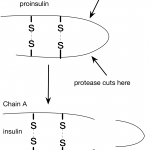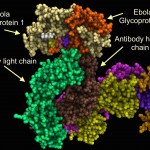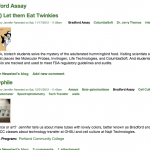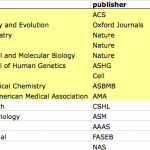@synbiobeta concluded it’s #sbbsf17 annual meeting on synthetic biology Oct 5, 2017. The progress companies are making in harnessing biology as a platform for manufacturing and problem solving is world changing.
Locations of Synbio Companies
What is Synthetic Biology?
Synthetic biology is a term that is used to describe the convergence of biotechnology and engineering. The dramatic cost decreases in our ability to read and write DNA (sequence and synthesize), combined with increasing capabilities in automation and informatics has catalyzed a new sub-industry within biotechnology. Synthetic…
biotechnology
The biotechnology (biotech) industry is incredibly diverse. Recently, I wrote about the size of the biotech industry, which is, of course, related to how biotechnology is defined. As a strict definition, biotechnology is the use of biology to turn raw materials into useful products. However, the act of developing a biotech product requires many enabling technologies, reagents, and services that form today's modern industry.
The term biotechnology was first coined in 1919 by Károly Ereky, a Hungarian agricultural engineer, who foresaw a time when biology could be used for turning…
A simple web search says biotech is really big. One estimate indicates that the industry will have $400 billion in sales in 2017 with growth to over $775 billion by 2024 [1]. Another report suggests there are over 77,000 employers [2]. That’s big, but is it real, and what you can do with this information?
Worldwide locations of biotechnology employers. Source Biotech-Careers.org
At Biotech-Careers.org we're interested in helping students and graduates of biotech programs at community and four-year colleges learn about the multitude of opportunities available in the…
It's well understood in science education that students are more engaged when they work on problems that matter. Right now, Zika virus matters. Zika is a very scary problem that matters a great deal to anyone who might want to start a family and greatly concerns my students.
I teach a bioinformatics course where students use computational tools to research biology. Since my students are learning how to use tools that can be applied to this problem, I decided to have them apply their new bioinformatics skills to identify drugs that work against Zika…
We've been fans of the Molecule of the Month series by David Goodsell, for many years. Not only is Dr. Goodsell a talented artist but he writes very clear descriptions of the ways molecules like proteins, RNA, and DNA work together and function inside a cell.
To learn about proteins and their activities, I like to go directly to the Molecule of the Month page, where I can find a list of articles organized by molecule type and name. Many of these articles can also be downloaded in a PDF format.
A really nice of his articles is that he includes PDB IDs for all the…
In my last post, I wrote about insulin and interesting features of the insulin structure. Some of the things I learned were really surprising. For example, I was surprised to learn how similar pig and human insulin are. I hadn't considered this before, but this made me wonder about the human insulin we used to give to one of our cats. How do cat and human insulin compare?
It turns out, that all vertebrates produce insulin, even frogs and zebra fish. Human preproinsulin is only 110 amino acids long and even human and fish insulin are pretty similar…
In 1925, dogsledders raced through the frozen Alaskan bush to bring antiserum to the isolated village of Nome. The antiserum arrived in time, saved the lives of many villagers from the horrors of diphtheria, and inspired the Iditarod, a famous race in celebration of the dog sledders' heroic feat.
West Africa could use a similar effort today. Richard Harris's blog at NPR has a good story about doctors' efforts to develop and use antiserum to treat Ebola. According to ABC news, Dr. Kent Brantly, who is being seen at Emory University Hospital was treated…
Living in Seattle fosters a certain pessimism when it comes to large companies. Boeing has always been a poster child for employment uncertainty, regularly hiring large numbers of people and just as regularly, laying them off. Now, we have Microsoft and Amgen joining the club, with Microsoft layoffs impacting an estimate 1350 people in the area, and Amgen, planning to shed 660 jobs when it closes facilities in Seattle and Bothell. Sometimes as a biotech educator, it’s hard to reconcile the prospects of knowing we're training students for well-paying, interesting…
Guest Blog By Melissa Rhoads, biotechnology strategist at Lockheed Martin
Every New Year’s Eve, my siblings and cousins wrote down what we wanted to be when we grew up, and year after year, I dreamed of becoming a veterinarian. It was not until I cleaned manure all day at a volunteer zoo event that I realized I wanted to explore other options.
So how did I find my passion? Well, I love to solve problems, and at its core, engineering is problem-solving. It is a way of thinking. As a result, while I started as a biology major, I graduated college with a degree in electrical engineering.…
Why should students blog about science? Don't they have enough to do already?
Last Thursday night I participated in a panel discussion about science blogging (see the video) at ScienceOnline Seattle (#scioSEA)(video) and mentioned that we have two students blogging for us at Bio-Link. A question I saw afterward via Twitter, from @NurhafizPiers was this:
what is the purpose of the blog for the student?
I didn't get to answer the question Thursday night, so I'll answer now.
We're doing an experiment. My student bloggers and I are going to try and figure out if their blogs…
I might be exaggerating slightly about the ready availability of the materials...
Regenesis: How Synthetic Biology Will Reinvent Nature and Ourselves by George Church and Ed Regis looks like a futurist tome on what could happen when technology finally catches up with human imagination and everything changes. Except it isn't. Most futurists are people with some knowledge of technology, a fertile imagination, and a publicist. Regenesis is by a scientist (working with a writer) who is busy making a different future and who has been involved in every stage of development of the technology under…
The Backstory: As it stands today,when one of the National Institutes of Health (NIH) provides the funding for a scientific research project, and those results are published, they must be made freely available to public, within a set period of time. The reasoning behind this requirement is that taxpayers funded everything about the research except for the final publication, and so they have already paid for access.
The Research Works Act (#RWA), HR 3699, is a bill in the House of Representatives that would roll back this requirement. If it passes, taxpayers will…
Like everything else, if we want to know what's going on, we have to ask.
So, it's time once again for the 2011-2012 National Biotechnology/Life Sciences Program Survey.
Yes, indeed.
Federal and state agencies will use the results to determine how best to support programs like yours. This study will also help prospective students and industry employers find your program. Survey results will be available to you to help with program planning, grant activities, and more.
We only want one person from each biotechnology / biomanufacturing / bioscience program to complete the survey. If you are…
What roles should community colleges play in training the bioeconomy workforce of the future?
Send your answers to bioeconomy@ostp.gov by Dec. 6th.
One night towards the end of October, we happened to meet with someone who could tell us more.
We asked him about a request for information (RFI) soliciting input on the bioeconomy, that some of us saw posted on the Federal Register web site.
"What could information could we provide?," We asked (a little skeptically).
"Does the Whitehouse really want our input on ways to stimulate the bioeconomy and build the bioscience workforce?"
"Yes," he…
"It's all about saving Aunt Millie"
Bob Swanson
Co-Founder of Genentech
I just learned today that Jim DeKloe, who wrote this post as a guest author a few years ago is giving a webinar on May 11th on protein purification from industrial enzymes to cancer therapy.
Jim's webinar, offered through Bio-Rad, has two sessions at 3 pm Eastern and 7 pm Eastern. Registration is free and you can register HERE.
Jim is one of the most inspirational educators I know and he's the sort of person that reminds you why educating students about biotechnology careers is important. His moving story is one that…
The National Science Foundation recently announced an ambitious plan to transform biology education across the United States called "Vision and Change." Funding for this mission is being provided by a new NSF grant program called "TUES" for Transforming Undergraduate Education in Science.
This finding may have been a surprise to some, but two year colleges have a disproportionate impact on biology education in the U.S. (1, 2). At least half of the country's biology students are enrolled at two year colleges. Additionally, community colleges often provide the only college-level biology…
Disclaimers - just so you know...
This information is cross-posted at www.bio-link.org
All the data and graphs in this post were obtained from Simplyhired.com.
I do not have any kind of commercial affiliation with this company I found their site via GenomeWeb.
Having worked around biotechnology for several years, I thought I was pretty familiar with biotech job descriptions.
I decided to test this assumption by playing with the data at SimplyHired.com.
Being able to quickly search with different terms and examine trends in job postings has proved to be an enlightening experience.…
Wired Campus shared an interesting story this morning about a career site for female science / engineering professionals. The site is called ASU CareerWISE and its mission is to help women with problem solving.
I like the idea and I like that they built the site in Drupal, since I've become a big Drupal fan over the past year, but I think they've missed the point in a big way.
You see, every link on the front page leads me to this:
Now, I could be wrong, and I do understand the need for password protection in sensitive matters, but if I were looking for help with problem solving, and I…
The Economist is running an online debate and we need your vote.
Vote here.
My opening statement:
The number of people on Earth is expected to increase from the current 6.7 billion to 9 billion by 2050 with food demands expected to rise by 70%. How will we feed them? If we continue with current farming practices, vast amounts of wilderness will be lost, millions of birds and billions of insects will die, scarce water will be wasted, greenhouse gas emissions will increase and farm workers will be exposed to harmful chemicals. Clearly, the future of our planet requires that we improve the…
Jonathan Eisen (@phylogenomics) shared this wonderful Lady Gaga lab spoof on Twitter the other day. It rocks.
And, it makes me wonder if my pals who've been thinking about getting students interested in careers by having scientists talk on camera might be going at this the wrong way. Sure, videos of scientists talking are totally fascinating (yawn..) and...
Oh right, where was I?
Well, here's the thing. If you want to get kids interested in something, you have to use something that interests them. Your strategy isn't going to work unless the kids find it intriguing enough to go watch…
